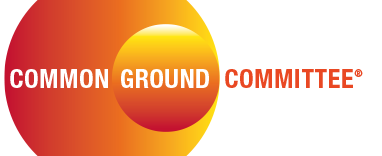How Can We Fix Polarization? Part 1: Taking Stock

Inauguration day has come and gone, and we’ve had a more peaceful transition of power than many thought possible. There was no violence; the ceremony was beautiful, reverent, and calm; and the mittened Bernie memes might be the most bipartisan political laugh we’ve seen in years.
But that doesn’t mean “problem solved”; far from it. We have a tremendous job ahead of us—as a nation, a President, a Congress, and an electorate—to find a way across the aisle that’s become an abyss, and have productive legislative conversations. There isn’t a mandate of a clear majority in favor of Biden’s goals, policies, and views, and there’s even significant division within each party when it comes to how to move forward.
Common Ground Committee turned the microphone on its own co-founders Erik Olsen and Bruce Bond to talk about what it’s going to take to fix our polarization problem.
So here we are post-inauguration, a place that glowed on the calendar with the expectation of progress toward unity. But so much has happened in January alone. Are we in a different place than we were in 2020?
Erik Olsen: Yes. Some Democrats are reaching out to engage with their Republican colleagues to find common ground despite the violence on January 6th. However, the two parties are currently fractured, with three quarters of lawmakers still in the middle.
The country is tired and looking for a way forward. As we move past the inauguration and the news cycle moves forward, the President has expressed a desire for more unity. Now Congressional leadership has an opportunity to emphasize such unity. However, they need to strike the right tone. We are concerned that with the significant use of executive orders and the impeachment trial, we aren’t getting off to a great start.
How do we begin to approach fixing the polarized situation we’ve been steeped in for years?
Bruce Bond: It starts with people thinking, first, that we need to have a change, that polarization needs to be fixed. While there’s been a general view that polarization is a bad thing, until Jan 6 there was no sense of urgency. What we’re seeing since the occupation of the Capitol is that it’s becoming more important — that people are becoming more and more concerned about it.
There is a study done by More in Common in 2018, which essentially described 77 percent of the electorate as what they called the “exhausted majority.” And that’s significant, because that group wants change, wants leaders to work together, unlike the 23%, some from the left and some from the right, who are entrenched in their positions.
But with a closely divided Senate and House, the common grounders have an opportunity because they will be courted by both sides. That gives us hope for finding common ground and thereby making real progress.
What effect does an exhausted majority have on polarization?
Bond: That group used to be called the silent majority, and now it’s called the exhausted majority. That’s profound because what it says is that there’s now an emotional element attached to this not being on the extremes. The extremes are becoming irritating to people, and also, some are seeing that they’re not helpful but destructive. So that’s a start, and we see that as one of the first steps.
The next problem is that you have people in the exhausted majority, who may have hope that things can change, but they don’t know how it will happen or what they can do about it. One of the things that we’ve been working on here with our events, and our podcasts, and much of our programming has been demonstrating what good looks like – demonstrating people of note engaging in passionate but constructive conversation that exposes common ground.
And if you can do that, if you can show people how common ground is found, we validate their hope, confirm there is reason to believe that we can change this, and inspire them to make the effort to find common ground in their own experiences with family, friends and colleagues. And, to begin to expect their leaders to do the same.
Stay tuned for the next installment of our three-part blog series on how to fix polarization, with a discussion of strategies that can lead to more progress and less division. Coming soon!



